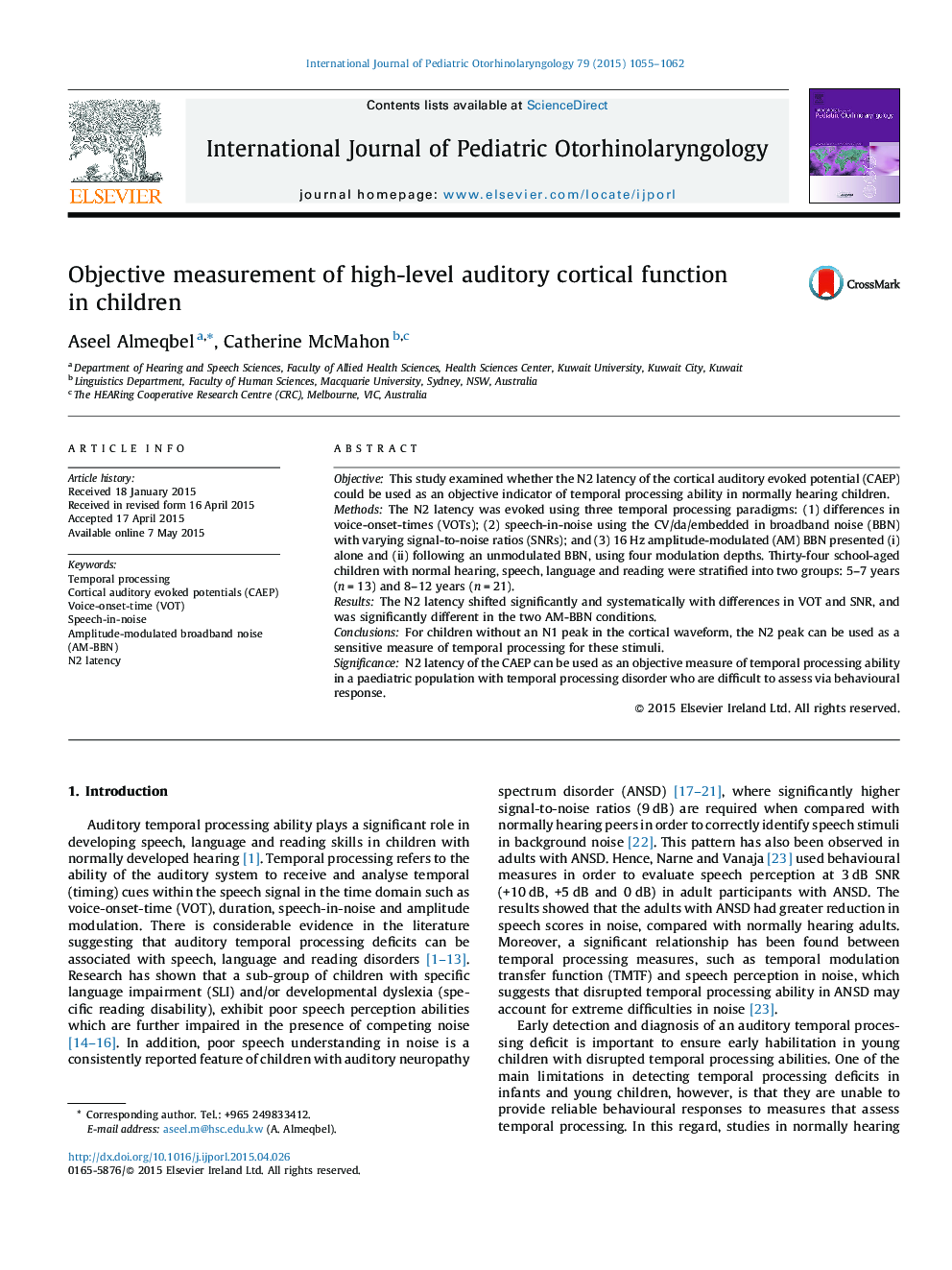| Article ID | Journal | Published Year | Pages | File Type |
|---|---|---|---|---|
| 4112184 | International Journal of Pediatric Otorhinolaryngology | 2015 | 8 Pages |
ObjectiveThis study examined whether the N2 latency of the cortical auditory evoked potential (CAEP) could be used as an objective indicator of temporal processing ability in normally hearing children.MethodsThe N2 latency was evoked using three temporal processing paradigms: (1) differences in voice-onset-times (VOTs); (2) speech-in-noise using the CV/da/embedded in broadband noise (BBN) with varying signal-to-noise ratios (SNRs); and (3) 16 Hz amplitude-modulated (AM) BBN presented (i) alone and (ii) following an unmodulated BBN, using four modulation depths. Thirty-four school-aged children with normal hearing, speech, language and reading were stratified into two groups: 5–7 years (n = 13) and 8–12 years (n = 21).ResultsThe N2 latency shifted significantly and systematically with differences in VOT and SNR, and was significantly different in the two AM-BBN conditions.ConclusionsFor children without an N1 peak in the cortical waveform, the N2 peak can be used as a sensitive measure of temporal processing for these stimuli.SignificanceN2 latency of the CAEP can be used as an objective measure of temporal processing ability in a paediatric population with temporal processing disorder who are difficult to assess via behavioural response.
